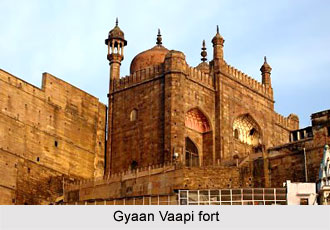 Architecture of Varanasi during later Mughals can smoothly be stated to have fallen within the purview of North Indian Mughal architecture, during the last phase. Varanasi had served as a crucial and decisive region since the Vedic Age as a Hindu-dominated cultural expression. However, the earlier Mughal rulers like Akbar or Jahangir were intelligent enough to maintain and preserve tolerant and friendly relations with the Hindus, after the gushing of Muslim arrival to India. As a result, besides an overwhelming response to Hindu culture, Islamic architecture is also known to have prevailed in Varanasi under the Mughal ruling clan. So much was their influence upon the gross Hindu population that Mughal architecture in Varanasi is still one of research and historic wonder, admired by the common eye. However, the scenario during the later Mughals was one that was much different and spun in a rather wholly opposite direction, in every sphere of administering or beautifying India. As a matter of course thus, architecture of Varanasi under the later Mughals had suffered a tremendous and sudden blow, a mar which could never be wiped out in the generations to come.
Architecture of Varanasi during later Mughals can smoothly be stated to have fallen within the purview of North Indian Mughal architecture, during the last phase. Varanasi had served as a crucial and decisive region since the Vedic Age as a Hindu-dominated cultural expression. However, the earlier Mughal rulers like Akbar or Jahangir were intelligent enough to maintain and preserve tolerant and friendly relations with the Hindus, after the gushing of Muslim arrival to India. As a result, besides an overwhelming response to Hindu culture, Islamic architecture is also known to have prevailed in Varanasi under the Mughal ruling clan. So much was their influence upon the gross Hindu population that Mughal architecture in Varanasi is still one of research and historic wonder, admired by the common eye. However, the scenario during the later Mughals was one that was much different and spun in a rather wholly opposite direction, in every sphere of administering or beautifying India. As a matter of course thus, architecture of Varanasi under the later Mughals had suffered a tremendous and sudden blow, a mar which could never be wiped out in the generations to come.
Mughal rulers had held Varanasi until the mid-eighteenth century when the city and the region around it fell to Hindu zamindars, who had been awarded the title `raja` by the Mughal emperor. The new ruler`s authority, however, was less than absolute, for the territory held by the Varanasi raja was under the larger umbrella of the British East India Company. Construction in Varanasi by Muslims, as such, had diminished during this period. Although mosques continued to be built, the most noteworthy Islamic structure built is the tomb of Lal Khan, dated 1768-69. This latter masterpiece architectural work in Varanasi under the later Mughals overlooks the Ganges at the site where today the famed Mughal Serai Bridge spans the river. The form of this square-plan tomb surmounted by a dome and four chattris is highly conservative, sticking by closely to Mughal-period monuments. Glazed-tile decoration on the tomb`s surface produces a conspicuous and arresting polychrome effect. While glazed-tile embellishment is not generally associated with Mughal and post-Mughal architecture in eastern India, such an embellishing feature was also utilised in a mosque almost precisely contemporary in date, the erected by Mir Ashraf, dated 1773, in Patna. There, however, the tiles had been placed on the floor.
In Varanasi, still looked at as the most sacred of all Hindu cities, temples were erected in prolific numbers during the late Mughal period and the years of rule by zamindars. Most important of these was the now-legendary Vishwanath temple, whose predecessor had been mercilessly razed by Aurangzeb. A small structure, with delicate reduplicated spires that punctuate the temple`s height, it was once again revitalised as the major site of pilgrimage in the holy city. In addition to temples, the ghats - often leading from massive edifices facing the waterfront, were chiselled by Hindu rajas, some residing at a considerable distance, as a means of establishing their own standing in this sacred city. Quite as a consequence, architecture of Varanasi during the later Mughal rule was an overwhelming and overpowering sole dazzling instance in the whole of India, enwrapped in architectural darkness.






































